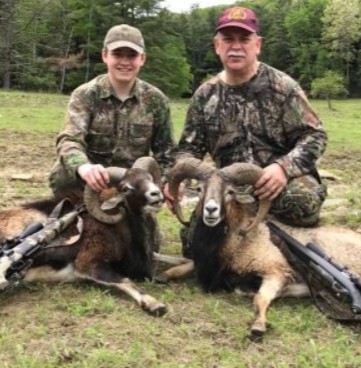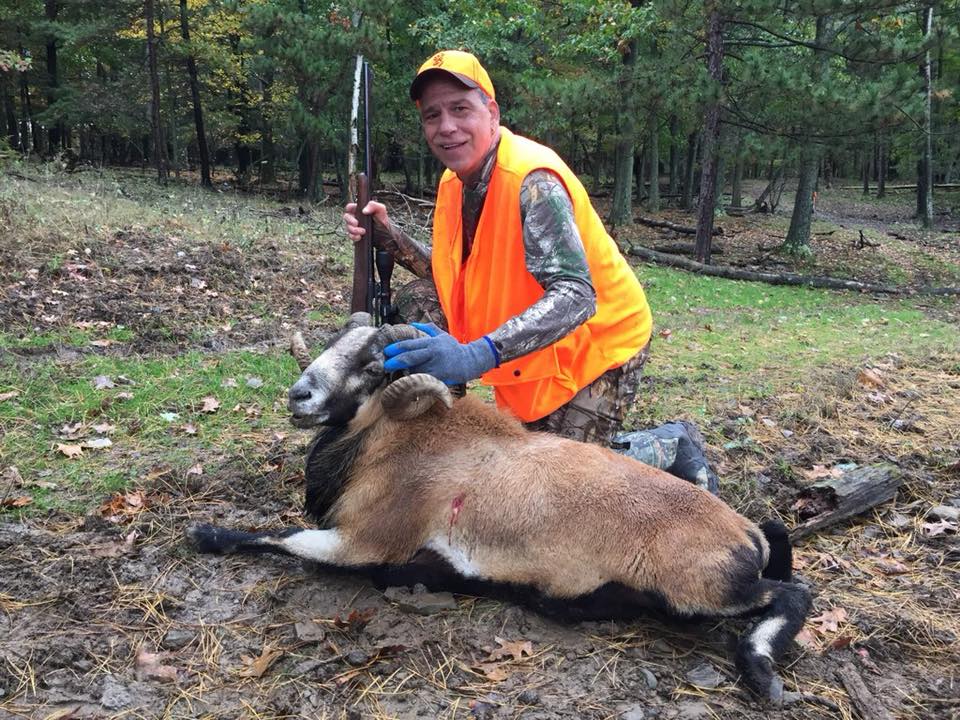
Corsican ram hunting has become one of the most exciting and accessible exotic hunts in North America, and Tioga Ranch, located in the scenic hills of Pennsylvania, has earned a reputation as one of the best destinations for hunters seeking a unique, challenging, and rewarding ram experience.
Whether you’re a seasoned hunter or approaching your first guided hunt, understanding Corsican ram behavior, habitat preferences, and hunt strategies will dramatically increase your chances of success.
Let’s take a look at some of the things you should know before going on a memorable, guided Corsican ram hunt.
What Makes Corsican Rams Unique?
Corsican rams are known for their dramatic horns, agile movements, and striking color variations. Originally developed by crossbreeding domestic sheep with wild Mouflon rams, they’re hardy and adaptable animals celebrated for their trophy potential.
Their horns, which can curl more than a full circle, are the primary attraction for hunters seeking both beauty and challenge. They make for a great and distinct hunting trophy.
Physical Characteristics of Corsican Rams
Corsican rams typically weigh up to 125 pounds, with deeply ridged horns ranging from 25–35 inches or more. Their coats vary widely, as they could be brown, black, red, white, or multi-colored, which also adds an element of trophy diversity unmatched by many other exotic species.
Behavioral Traits of Corsican Rams
Generally speaking, Corsican rams are highly alert animals, relying on acute vision and high terrain to detect threats. Corsican rams often travel in groups and use rocky outcrops or elevated pastures to establish vantage points. Their social dynamics also influence movement patterns, especially during rutting season.
Understanding Corsican Ram Habitat at Tioga Ranch
Tioga Ranch offers a natural and expansive environment ideal for Corsican ram behavior. The rolling terrain, wooded sections, and open fields mimic their native hillside habitats, giving hunters a realistic and unforgettable hunting experience
Terrain Elements
Rams are especially drawn to:
- High ground with clear visibility
- Thick brush for shelter
- Open hillsides for grazing
- Rocky or uneven surfaces that offer escape routes
This means hunters must be prepared for a variety of terrain challenges, which can include climbs, long sightlines, and unpredictable animal movement.
Daily Activity Patterns
Corsican rams are most active early in the morning and late in the afternoon. What’s more, midday hours usually push them into shaded areas or brushy cover. Understanding these patterns helps hunters plan when and where to position themselves for the best chances of a successful encounter.
Preparing for Your Corsican Ram Hunt
Preparation is key to a smooth and successful hunt. Whether you’re aiming for a trophy ram or simply an enjoyable experience, proper planning sets the foundation. As such, keep these things in mind:

Gear Essentials
Hunters should arrive with comfortable boots, camouflage suited to a woodland environment, weather-appropriate clothing, and a hunting caliber rifle, muzzleloader, shotgun, pistol or bow, depending on your personal preferences. Optics, such as binoculars or a quality scope, are essential for glassing ridges and judging horn size from a distance.
Physical Preparation
Rams often inhabit elevated or rough terrain, so be prepared to be on the move. Endurance and balance play a major role in spot-and-stalk scenarios on the ranch.
Hunting Strategies Used at Tioga Ranch
Tioga Ranch offers several hunting methods to match hunter preferences and experience levels. The two most common are spot-and-stalk hunting and blind or stand hunting.
Spot-and-stalk is an active approach requires hunters to move slowly across terrain, glassing open fields and hillsides for ram groups. It’s ideal for hunters looking for a more hands-on challenge that requires patience, stealth, and tracking skills.
Blind or stand hunting is a method that is well-suited for hunters who prefer a more controlled environment. Guides position hunters in strategic areas where rams frequently travel or feed. It’s also ideal during unpredictable weather or when the goal is trophy selection.
What to Expect from Guided Hunts at Tioga Ranch
One of the biggest advantages of Tioga Ranch is our highly experienced guide team. Our knowledge of ram behavior, terrain, and movement patterns makes the hunt productive and enjoyable. Our guides help track rams, assist in judging trophy potential, and ensure optimal shot placement. We also provide safety guidance, answer questions, and help navigate the land.
During the Hunt
Hunters can expect a combination of walking, glassing, and positioning for the ideal shot. Once an animal is harvested, guides assist with field dressing, transporting the ram, and handling trophy preparation.
Trophy Considerations
Corsican rams offer diverse trophy opportunities, with horn curl, length, and symmetry being the primary factors hunters evaluate. Tioga Ranch maintains strong genetics and healthy populations to ensure hunters encounter high-quality rams with excellent horn structure.
The Best Time to Plan a Guided Corsican Ram Hunt
Although our guided Corsican ram hunts are available year-round, the best time to hunt them to obtain a shoulder mount is from November until May.
Whether you’re seeking a stunning trophy ram or simply the thrill of an exotic hunt, Tioga Ranch delivers one of the best opportunities in the country. To learn more about the guided Corsican ram hunts we offer in Tioga, PA, contact us today.
